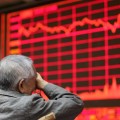Major Events of Last Week
Investors were undoubtedly taken aback late last week when the USA published a spate of disappointing economic indicators. For example, US Retail Sales inched upwards by just 0.1% during October compared to analysts’ forecasts of 0.3%. This unexpected weak result was primarily driven by a slump in automobile purchasing and implies a potentially significant slowdown in consumer activity during the forthcoming Christmas period. Prominent economists summarized this development by advising that this dismal report certainly points to a slow start to the fourth quarter of 2015.
More bad news followed when the US Producer Price Index (PPI) extended its losses during October for the second successive month. Specifically, the PPI dropped by 0.4% last month after it slid by 0.5% during September. In fact, this important parameter has now fallen by 1.6% since the same time last year. Nevertheless, the combination of weak inflationary data and reduced consumer spending is still not expected to deter the Fed from instigating its first interest rate hike next month in practically a decade.
Compared to the USA, the economy of the Eurozone is in even worse shape particularly after it issued its Gross Domestic Product (GDP) for the third quarter of 2015. The GDP rose by just 0.3% on a quarterly basis and 1.6% yearly missing economists’ expectations of 0.4% and 1.7% respectively. As these numbers also failed to comply with the predictions of the ECB’s own staff, conditions are now ripe for the introduction of new stimulus measures next month. Expert consensus is currently forecasting that the ECB will boost its asset purchasing program by another 20 billion euros per month producing a new total of 80 million. In addition, the ECB is expected to trim its deposit rate by another 10 basis points. The recent Chinese economic slowdown was blamed for last month’s dismal performance.
Check out our independent review of 24Option for a good choice of trading platforms. Or try trade with extreme volatility and profit with bitcoin trading in real time.
What to Expect This Week
Mario Draghi, the President of the European Central Bank (ECB), is scheduled to deliver a speech on Monday. He is expected to lay the foundations for the implementation of additional monetary easing policies in December. Later, the Eurozone will present the final revision of its Consumer Price Index (CPI) for last month. This important parameter is anticipated to confirm that inflationary forces remain stagnant within Europe.
The Reserve Bank of Australia (RBA) will launch Tuesday by disclosing the minutes from its last monetary policy meeting. Investors will be keen to learn if this document provides any insights into whether the RBA is presently contemplating any new interest rate cuts. Great Britain will then reveal its CPI for October which is forecasted to produce a ‘no-change’ reading of -0.1%. The USA will complete the session by releasing its own CPI for last month. The Fed will be looking for a result above 0.2% in order to provide it with the confidence to hike rates before the end of 2015.
The pivotal event will occur during Wednesday afternoon, EST, when the Fed publishes the minutes from the last monetary policy meeting of the Federal Open Market Committee (FOMC). This document could dramatically increase volatility if it confirms that the US Central Bank is, indeed, adopting an increasingly hawkish stance.
On Thursday, the Bank of Japan (BoJ) will issue its latest Monetary Policy Statement, which will be supported by a subsequent press conference. Analysts are not expecting that the BoJ will instigate any big changes or surprises this time around. The United Kingdom will next post its Retail Sales figure for last month. Experts are predicting a dour outcome as they are presently forecasting a 0.4% decline. They are attributing such a disappointing performance to the fact that UK consumers are opting to restrict their current buying by preferring to wait for ‘Black Friday’ discounts.
Mario Draghi will terminate the week by delivering a second speech. Again, traders will pay careful attention to his statements in order to discover just how close the ECB is to introducing more stimulus measures.








